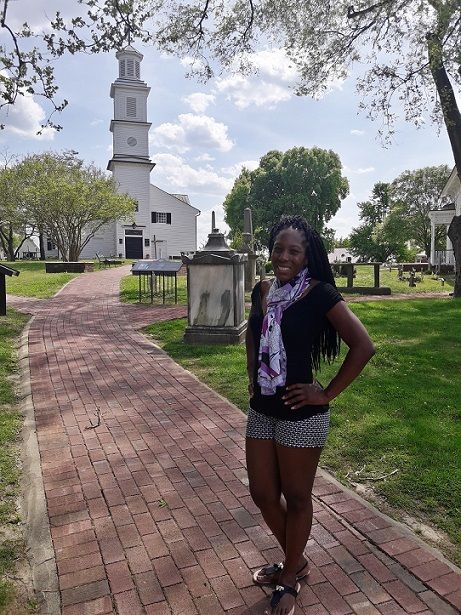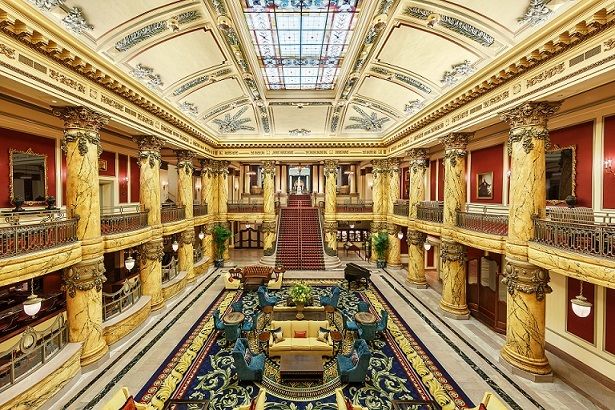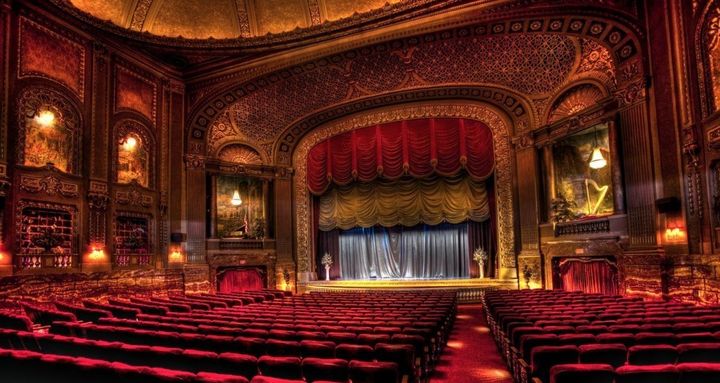
St. John’s Episcopal Church where Patrick Henry orated his Liberty or Death speech, calling for American Independence from Britain.
Richmond has always been on my list of quaint southern cities to visit. Each time I travel to Virginia, I feel life slow down, but not in the sense of boredom rather a hearkening to take each day as it comes with a leisurely appreciation of your neighbors and community. Most small towns have a way of doing that to you. Jamestown, Williamsburg and Arlington, Virginia all left indelible impressions upon me as was the case with Richmond, the birthplace of eight U.S. presidents.
I had the opportunity to visit the city when my literary reading series, At The Inkwell, recently launched there. Writer Matthew Hamilton, also the RVA readings curator, gave me a tour of the city. Richmond’s architectural blend of past and present will charm you at nearly every corner.
Nicknamed the Capital of the South, Richmond is more commonly known today as RVA, home to more than 31,000 students who attend the city’s largest campus, Virginia Commonwealth University.
The first place Hamilton showed me was Monument Avenue with million-dollar brick mansions and apartment buildings, dating back to 1914. The tree-lined street extends roughly five miles from the inner city westward to Henrico County. It is considered to be the residence for Richmond’s elite upper class. Queen Elizabeth, Winston Churchill and President Dwight D. Eisenhower all walked the wide boulevard of monuments in ceremonial parades to the Governor’s Mansion. The street was originally built to memorialize Confederate leaders like General Robert E. Lee, Stonewall Jackson and Jefferson Davis with grand statues.

The Grand Staircase at the Jefferson Hotel may have been the inspiration behind a scene in the Gone With The Wind movie.
When I told Hamilton that I was a huge Gone With The Wind fan, we swung by the decadent Jefferson Hotel listed on the National Register of Historical Places. Tourists often mistake the 180-room hotel for the famous scene where Rhett Butler carries Scarlett O’Hara up the stairs after a passionate fight; however, the hotel says this is not the case. It is believed that the staircase was merely the inspiration for the movie. This 290,000 square feet hotel, with rooms starting at $335 per night, was considered to be the finest in the country when it opened to the public in 1895.

The Byrd Theater has been nearly unaltered since it opened in 1928 and is still in full operation showing blockbuster films.
I ended my stay in Carytown, a cute shopping district where you can find unique gifts. The most eye-catching landmark is the Byrd Theater, named after one of Richmond’s founders, William Byrd. Its facade does not live up to its opulent 1,300-seating that has been well-preserved. It may look like it was built for live performances, but it’s been a movie theater from the very beginning, said Todd Schall-Vess, who has been the general manager for 19 years.
This was how movie theaters were made in the grand age of the movie palace; the theater was built in 1928. “The Bryd Theater was probably the last of the true movie palaces to be built in this country, because [at] the start of the Great Depression, the whole design motifs for movie theaters began to become a lot more austere and really didn’t have this level of opulence or elegance.”
Built in the French Empire style by Fred Bishop, a Richmond architect, Byrd Theater is decorated in paintings, marbled walls, gold leaf arches and an 18-foot, 2.5 tonne Chzechoslovakian crystal chandelier boasting over 5,000 crystals. The theater will celebrate 90 years next year after operating almost continuously since it opened. Patrons can see today’s blockbusters for just a $1.99 which is a steal for such a grand theater experience.
There is so much more history that I didn’t have a chance to see. I barely made it to St John’s Episcopal Church where Patrick Henry delivered his famous “Liberty or Death” speech. The church doors had just closed for the day so I walked around the grounds imagining Henry preaching to the crowds to fight for Virginia’s independence. It’s one of many hallmarks in our history that should never be taken for granted.
Monique Antonette Lewis has visited 14 countries and 27 U.S. states. She is the founder of At The Inkwell, a New York City-based organization that supports published authors through book reviews and literary readings. The reading series is hosted across major US cities and London. She is an editor for Acuris, a global financial news service. Monique lives in Denver.
